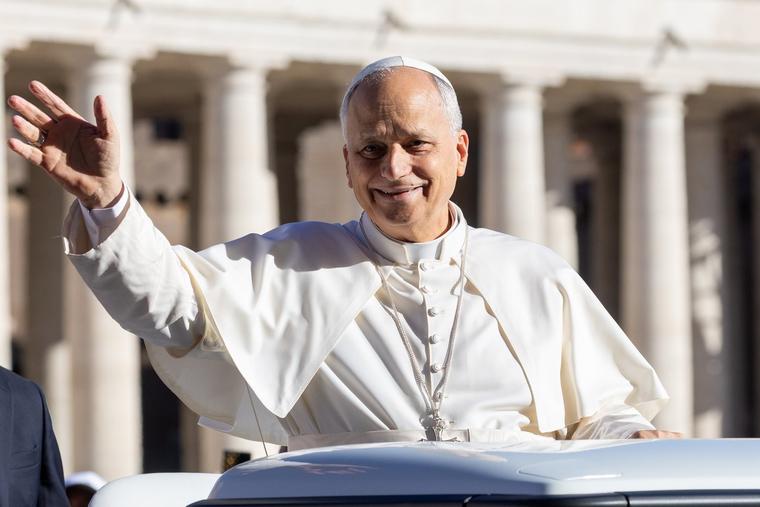COMMENTARY: The challenge of using such a framework is that many audiences take Brother Sun and Mother Earth and leave aside Sister Death and the danger of mortal sin.
The first major document of a pontificate is highly anticipated as an indication of the new Pope’s agenda. Pope Leo XIV has chosen to place his first document, the apostolic exhortation Dilexi Te (I Have Loved You) into a Franciscan framework.
The Vatican press office, unusually, carried a news item that Dilexi Te had been signed on Saturday, the feast of St. Francis of Assisi, Oct. 4. The public presentation of the document will take place on Oct. 9; usually it is only then that it is revealed when the document was officially signed, customarily on a particular feast day. In announcing the signing already, the Holy Father wanted to pay homage to St. Francis.
In that, he is also honoring his predecessor Pope Francis, who took his regnal name after the saint from Assisi. There is a deliberate display of continuity, which is typical in the early months of a new pontificate.
Two years ago, Pope Francis also signed on the feast of St. Francis an apostolic exhortation, Laudate Deum, a very specific scientific analysis and policy prescription regarding climate change. It was a follow-up to his 2015 encyclical on the environment, Laudato Si.
Pope Francis lifted up St. Francis as a model of “care for our common home,” resonating with widespread esteem for the saint from Assisi as an ecological patron. St. Francis, though, is not known as “the gardener” — a figure rich in biblical imagery — but as il Poverello, the “Poor Man.”
Dilexi Te is reported to be about care for and service to the poor, and thus Pope Leo XIV has chosen to emphasize that complementary aspect of St. Francis. The text is reported to have begun under Pope Francis, who frequently spoke of listening with care to the “cry of the earth” and the “cry of the poor.”
Incidentally, the Italian Parliament voted last week to reestablish the feast of St. Francis, who is the national patron of Italy, as a national holiday next year, marking the 800th anniversary of his death. The Franciscans worldwide have been preparing for that anniversary by marking the other 800th anniversaries of significant moments in the last years of their founder’s life.
The anniversary of the first Christmas Nativity scene in 1223, a popular devotional invention of St. Francis, was observed in 2023. Last year, 2024, marked the 800th anniversary of Francis receiving the stigmata. This year, 2025, has been dedicated by the Franciscans to the Canticle of the Creatures, the poem Francis wrote, which was also sung as he lay dying. It is one of the earliest examples of extant Italian literature. In the poem, sometimes called the Canticle of the Sun, Francis gives praise to the Lord through all creation.
Praise be You, Lord, with all your creatures,
Especially Brother Sun,
Who is the day and through whom
You give us light.
And he is beautiful and radiant with great splendor
And bears a likeness of You, Most High One.
Francis continues to praise Sister Moon and Brother Wind, Sister Water and Brother Fire, finally praising “Mother Earth, who sustains and governs us.”
In certain circles, often left out is the stanza about death and judgment:
Praised be You, my Lord,
through our Sister Bodily Death,
From whom no one living can escape.
Woe to those who die in mortal sin.
Blessed are those whom death will find in
Your most holy will,
For the second death shall do them no harm.
Pope Francis took the title Laudato Si from the Canticle of the Creatures, with its repeated refrain: Praised be You, Lord.
The challenge of using the Franciscan framework is that many audiences take Brother Sun and Mother Earth and leave aside Sister Death and the danger of mortal sin. Laudato Si was widely praised in the world for its climate-change-policy advocacy, but left aside its searching critique of a lifestyle dominated by a “technocratic paradigm” and its indictment of sinful behavior in the commercial realm.
Readers will be attentive to how Pope Leo uses that Franciscan framework. Certainly any praise of il Poverello will include a chastisement — echoing some of the most severe passages in the Scriptures — of those who love money and pursue wealth for its own sake.
But will the poverty of Francis be received only as a rebuke to the rich, and a policy preference for greater state redistribution of income, or will the Gospel motivation of Francis’ poverty come to the fore?
Poverty is both an evangelical counsel and an economic cause of suffering; the two can often be confused, or even set against each other.
Dilexi Te will be presented in part by the papal almoner, Cardinal Konrad Krajewski, who carries out the corporal works of mercy, concrete acts of charity, on behalf of the Holy Father. That is a reminder that when Pope St. John Paul II died, there was left unfinished an encyclical on charity. Pope Benedict XVI took up that draft, reworked it substantially, adding a theological meditation on love, and published it as his first encyclical, Deus Caritas Est (God Is Love).
Likewise, when Benedict abdicated, he left unfinished an encyclical of faith, having already written encyclicals on love and hope. Francis published that text with minor modifications as his first encyclical, Lumen Fidei (Light of Faith). Leo thus imitates his immediate predecessors, with St. Francis as the bridge from the last pontificate to the new one.
